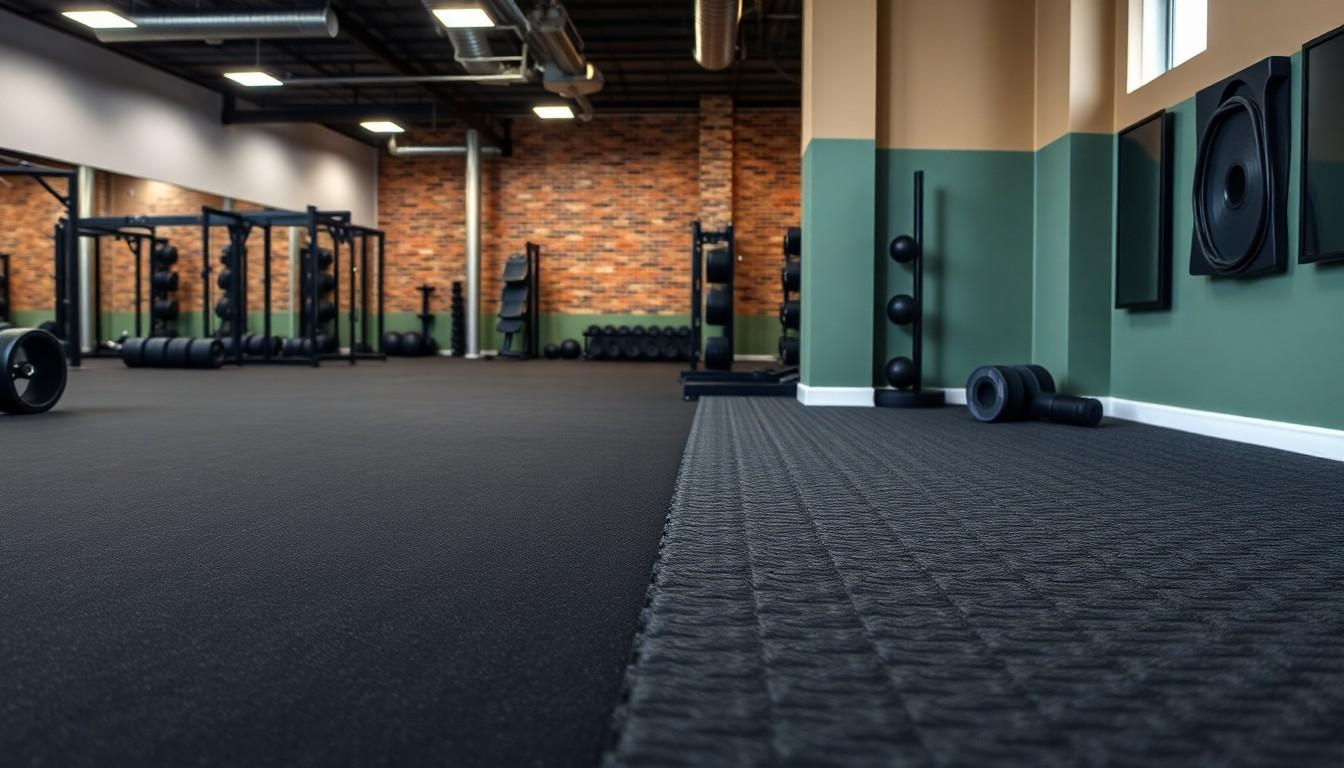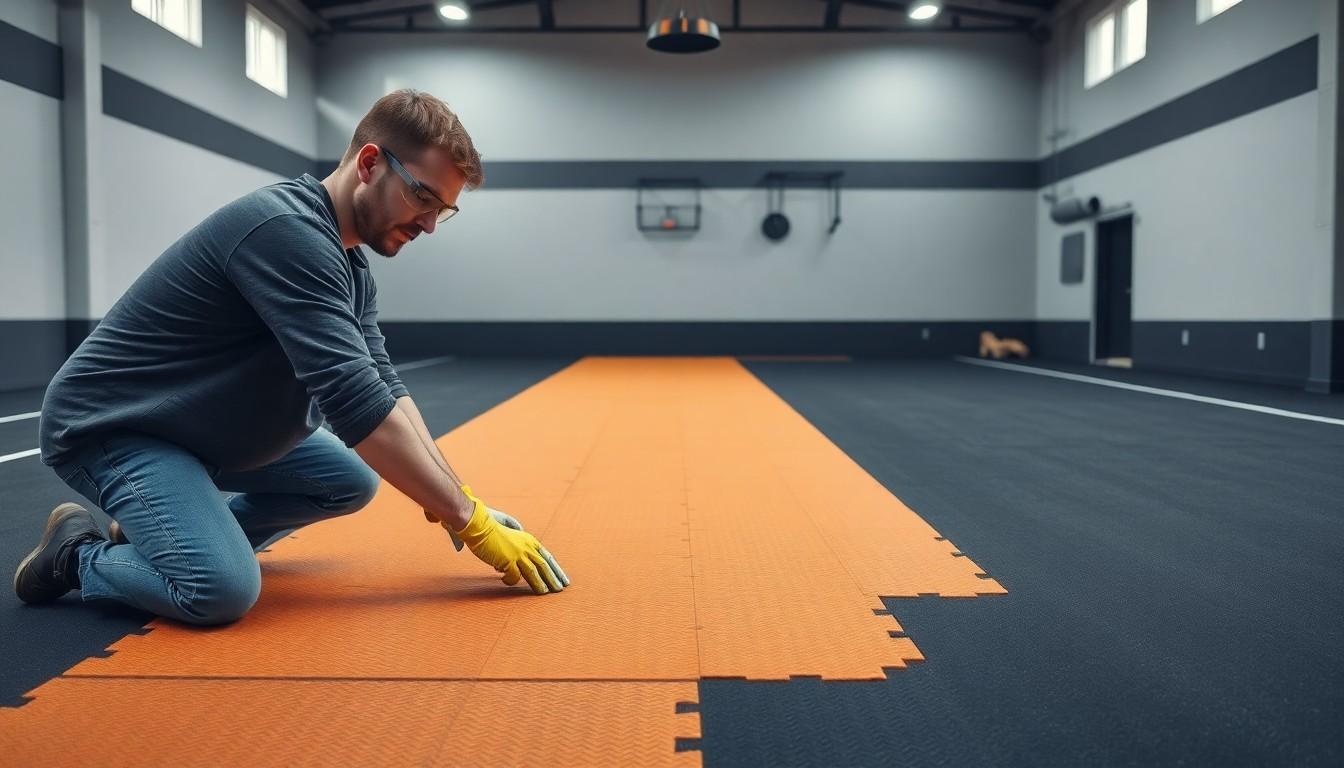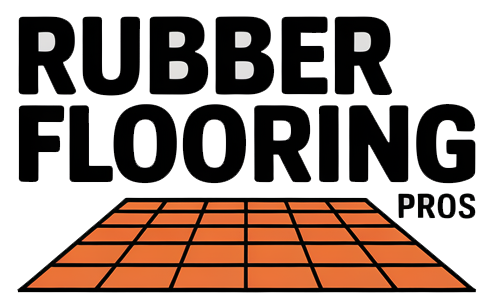When you’re setting up a home gym or fitness facility the last thing you might think about is flooring. Yet it’s one of the most crucial elements for creating a safe and effective workout space. Rubber gym flooring has become the go-to choice for both professional gyms and home workout areas offering protection durability and noise reduction.
You’ll find that rubber flooring doesn’t just shield your existing floor from heavy equipment and weights – it’s also essential for preventing injuries and maintaining proper form during exercises. Whether you’re dropping weights performing plyometric exercises or using cardio equipment rubber flooring provides the perfect balance of cushioning and stability that other materials simply can’t match.
Key Takeaways
- Rubber gym flooring is essential for safety, providing up to 85% impact absorption and protecting both equipment and exercisers from injury
- Different thickness options are available: 6-8mm for basic home gyms, 8-12mm for general use, and 15-20mm+ for heavy-duty commercial applications
- Two main types exist: rolled rubber (ideal for large spaces over 50m²) and interlocking tiles (better for smaller areas and DIY installation)
- Proper maintenance can extend lifespan from 10 to 20 years, requiring regular cleaning with pH-neutral cleaners and avoiding petroleum-based products
- Installation costs range from £25-85 per square metre, with additional costs for underlayment, adhesives, and professional installation if required
- The investment offers long-term value through reduced equipment damage, lower maintenance costs, and improved noise reduction of 15-20 decibels
Benefits of Rubber Gym Flooring
Rubber gym flooring enhances workout spaces through multiple practical advantages. The resilient properties of rubber create an optimal exercise environment that balances protection with performance.
Impact Absorption and Safety
Rubber gym flooring absorbs up to 85% of impact force from dropped weights and equipment. The shock-absorbing properties protect your joints during high-impact exercises like jumping, running or weightlifting. This protective layer reduces stress on your ankles, knees, hips and spine by dispersing force across the surface area.
Key safety benefits include:
- Minimises risk of injuries from falls or dropped equipment
- Prevents equipment damage when weights hit the floor
- Creates stable footing for dynamic movements like lunges or squats
- Reduces muscle fatigue during extended training sessions
Noise Reduction Properties
Rubber gym flooring decreases noise levels by 15-20 decibels compared to concrete or wood surfaces. The dense rubber material dampens vibrations from exercise equipment, dropped weights and foot traffic.
- Absorbs impact sounds from heavy equipment
- Reduces echoing in enclosed workout spaces
- Minimises noise transfer between floors
- Creates a more focused training environment
| Noise Reduction Comparison | Decibel Reduction |
|---|---|
| Standard Rubber (8mm) | 15 dB |
| Premium Rubber (12mm) | 18 dB |
| Heavy-Duty Rubber (15mm+) | 20+ dB |
Types of Rubber Gym Flooring

Rubber gym flooring comes in distinct formats to suit different installation requirements and facility needs. Each type offers specific advantages for various gym environments and usage patterns.
Rolled Rubber Flooring
Rolled rubber flooring arrives in continuous sheets measuring 1.25m to 1.85m wide with lengths up to 15m. These large-format rolls provide seamless coverage across extensive areas, creating a uniform surface ideal for commercial gyms or larger home facilities. The installation requires adhesive application to secure the material to the subfloor, resulting in a permanent, gap-free surface that prevents moisture penetration.
Key characteristics of rolled rubber flooring:
- Uniform appearance with minimal seams
- Available in thicknesses from 4mm to 12mm
- Cost-effective for large areas over 50m²
- Professional installation recommended
- Enhanced moisture resistance due to fewer joints
Interlocking Rubber Tiles
Interlocking rubber tiles feature precise edge patterns that connect like puzzle pieces, creating a secure floor system without adhesives. These tiles typically measure 500mm x 500mm or 1m x 1m, offering flexibility for custom layouts and easy replacement of damaged sections.
- DIY-friendly installation without special tools
- Quick layout modification capabilities
- Available in thicknesses from 8mm to 20mm
- Ideal for areas under 50m²
- Portable design for temporary installations
- Built-in drainage patterns for wet areas
| Feature | Rolled Rubber | Interlocking Tiles |
|---|---|---|
| Coverage Size | Up to 15m length | 500mm-1m squares |
| Thickness Range | 4-12mm | 8-20mm |
| Installation Time | 4-6 hours/100m² | 2-3 hours/100m² |
| Average Cost/m² | £25-35 | £30-45 |
| Lifespan | 10-15 years | 8-12 years |
Installation and Maintenance

Installing rubber gym flooring requires proper planning and ongoing maintenance to ensure its longevity and optimal performance. The installation method and care routine depend on factors like the type of rubber flooring material selected and the size of your exercise space.
Professional vs DIY Installation
Professional installation offers precision and efficiency in laying rubber gym flooring. A professional team completes a standard 20 sqm area installation in 4-6 hours, including subfloor preparation. The cost ranges from £8-£12 per square metre for labour.
DIY installation saves £150-£300 on labour costs and provides these advantages:
- Complete control over the installation timeline
- Flexibility to adjust layout during installation
- Direct quality oversight of the process
- Immediate fixes for any issues that arise
Essential tools for DIY installation include:
- Utility knife with spare blades
- Straight edge or T-square
- Measuring tape
- Adhesive (for rolled rubber)
- Rubber mallet (for interlocking tiles)
Cleaning and Care Tips
Daily maintenance of rubber gym flooring involves these specific tasks:
- Vacuum loose debris using a soft-bristled attachment
- Wipe spills immediately with a microfibre cloth
- Dust mop with a non-abrasive head
- Remove scuff marks with a tennis ball
Weekly cleaning routine includes:
- Damp mopping with pH-neutral cleaner
- Spot cleaning stubborn stains
- Checking seams for lifting edges
- Inspecting for wear patterns
Care precautions to maintain rubber flooring quality:
- Avoid petroleum-based cleaners
- Clean equipment feet before placement
- Use protective mats under heavy machinery
- Maintain room temperature between 18-24°C
- Keep humidity levels at 35-65%
Regular maintenance extends the lifespan of rubber gym flooring from 10 years to 15-20 years when properly maintained.
Cost Considerations
Rubber gym flooring costs vary based on material quality thickness installation method. Understanding the complete cost structure helps in making an informed investment decision for your fitness space.
Initial Investment
Rubber gym flooring prices range from £25 to £85 per square metre depending on thickness material quality. Here’s a breakdown of upfront costs:
| Type of Flooring | Price per m² | Installation Cost per m² |
|---|---|---|
| Rolled Rubber (6mm) | £25-35 | £8-12 |
| Interlocking Tiles (8mm) | £35-45 | £5-8 |
| Premium Rubber (12mm) | £65-85 | £12-15 |
Additional costs include:
- Underlayment: £3-5 per m²
- Adhesives: £15-20 per 5L bucket
- Edge strips: £8-12 per linear metre
- Protective sealant: £25-30 per gallon
Long-term Value
Rubber gym flooring delivers significant cost benefits over time through:
Durability metrics:
- Lifespan: 15-20 years with proper maintenance
- Impact resistance: 85% shock absorption
- Weight capacity: 200kg per square inch
Cost-saving features:
- Reduced equipment replacement costs from damage protection
- Lower maintenance expenses compared to carpet or vinyl
- Energy savings from natural insulation properties
- Protection of subfloor avoiding expensive repairs
- Transferable to new locations if moving premises
- Daily sweep: 5 minutes
- Weekly damp mop: 15 minutes
- Quarterly deep clean: 2 hours
- Annual sealant application: £1-2 per m²
Best Places to Install Rubber Flooring
Home Gyms
- Basement gyms benefit from rubber’s moisture resistance properties
- Garage gyms require 8mm-12mm thickness for concrete subfloor protection
- Spare room conversions need 6mm-8mm thickness for wood subfloor protection
- Indoor-outdoor transition areas gain protection from rubber’s weatherproof qualities
Commercial Fitness Centres
- Free weight zones require 15mm-20mm thickness for heavy impact absorption
- Cardio equipment areas need 8mm-10mm thickness for machine stability
- Group exercise studios benefit from 6mm-8mm thickness for aerobic activities
- Personal training zones gain enhanced grip from textured rubber surfaces
Specialised Training Areas
- CrossFit boxes require 20mm-25mm thickness for Olympic lifting protection
- Powerlifting platforms need layered rubber construction for maximum durability
- Functional training zones benefit from 12mm-15mm thickness for dynamic movements
- Recovery areas gain comfort from rubber’s ergonomic properties
- School gymnasiums require 10mm-12mm thickness for versatile activities
- Hotel fitness rooms need 8mm-10mm thickness for noise reduction
- Physical therapy clinics benefit from 6mm-8mm thickness for rehabilitation exercises
- Athletic training facilities gain safety from rubber’s slip-resistant surface
| Area Type | Recommended Thickness | Impact Absorption Rate |
|---|---|---|
| Home Gym | 8mm-12mm | 65-75% |
| Commercial Gym | 15mm-20mm | 75-85% |
| CrossFit Box | 20mm-25mm | 85-90% |
| Multi-Purpose | 10mm-12mm | 70-80% |
Conclusion
Rubber gym flooring stands as your best investment for creating a safe and effective workout space. Its exceptional durability combined with superior impact absorption makes it the smartest choice for protecting both you and your equipment.
Whether you’re setting up a home gym or managing a commercial facility you’ll find that rubber flooring delivers unmatched performance. The initial investment pays off through reduced maintenance costs extended equipment life and enhanced workout safety.
Remember that choosing the right thickness and type of rubber flooring for your specific needs will ensure optimal performance and longevity. With proper care and maintenance your rubber gym flooring will serve as a reliable foundation for your fitness journey for many years to come.
Frequently Asked Questions
What makes rubber flooring the best choice for a gym?
Rubber flooring is ideal for gyms because it offers superior impact absorption, noise reduction, and durability. It can absorb up to 85% of impact force from dropped weights, reduces noise by 15-20 decibels, and protects both equipment and existing floors. Its balance of cushioning and stability makes it safer for workouts whilst preventing injuries.
How long does rubber gym flooring last?
With proper maintenance and care, rubber gym flooring can last 15-20 years. Regular cleaning and appropriate upkeep can significantly extend its lifespan from the standard 10 years, making it a cost-effective long-term investment for any fitness facility.
What thickness of rubber flooring do I need for my gym?
The required thickness depends on your gym’s purpose. Home gyms typically need 8mm-12mm, commercial gyms require 15mm-20mm for free weight areas, and CrossFit or Olympic lifting zones need 20mm-25mm thickness. Choose based on the type of exercises and equipment you’ll be using.
How much does rubber gym flooring cost?
Rubber gym flooring costs between £25 to £85 per square metre, varying based on thickness and quality. Additional costs may include underlayment, adhesives, edge strips, and protective sealants. The total investment depends on the installation method and area size.
Can I install rubber gym flooring myself?
Yes, you can install rubber gym flooring yourself, particularly if using interlocking tiles. DIY installation offers cost savings and flexibility, though professional installation ensures efficient and precise results. Proper planning and essential tools are required for successful DIY installation.
How do I maintain rubber gym flooring?
Regular maintenance includes daily sweeping, weekly mopping with mild soap solution, and prompt cleaning of spills. Avoid harsh chemicals and ensure proper drying after cleaning. Following a consistent maintenance schedule will preserve the flooring’s quality and extend its lifespan.
Does rubber flooring reduce noise effectively?
Yes, rubber flooring significantly reduces noise levels by 15-20 decibels compared to concrete or wood surfaces. Its dense material effectively dampens vibrations from exercise equipment and foot traffic, creating a more pleasant workout environment and reducing noise transfer between floors.
What types of rubber gym flooring are available?
The main types are rolled rubber flooring and interlocking rubber tiles. Rolled rubber is ideal for larger areas with seamless coverage, while interlocking tiles offer flexibility for custom layouts and easier installation. Each type has specific advantages suited to different gym environments.
